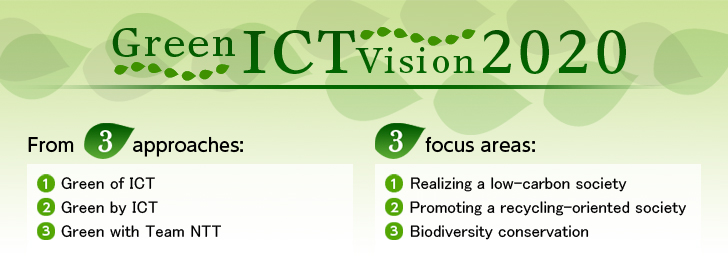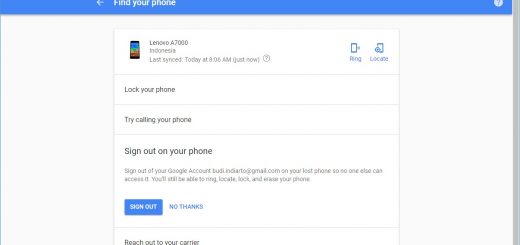How Green is Your Computer?

How green is your computer doesn’t mean that your computer color is green (sure it is not my fav color :D), but concerned about our behaviour using ICT. The concept of Green ICT has been applied since the 1990’s with the Energy Star label for electronic items that have passed the test as energy-efficient appliances. Although many studies that provide concepts and approaches for adopting Green ICT within the company, still it is necessary to create a framework, which provides concrete steps to implement Green ICT in the organization. This short article will discuss the background of the emergence of the concept of Green ICT, as well as the motivation of what drives organizations to adopt Green ICT in their companies. I’ll share to you this idea to build awareness about Green ICT, and also simple examples that can be implemented in our daily activity.
Challenge the use of ICT systems would not only in terms of cost, but also the impact on the environment. The increase of electricity cost and company awareness to manage the environment better, be part of the reason for the company to find strategies to reduce the cost of electrical energy consumption in their ICT systems, as well as make the system become more friendly to the environment (Hodges and White, 2008). The fact that the ICT system has a direct adverse impact on the environment can not be avoided, but on the other hand, ICT systems have become part of a modern society that certainly can not be granted or terminated. The adverse impact is increasing the carbon emissions from the use of ICT equipment. So that it appears a variety of ideas for innovation and development of various elements of ICT systems that have minimal impact on the environment. Various ways and this approach are then known as the Green ICT (Banerjee et al, 2013).
The main impact of ICT systems is arising from the use of ICT systems, and from ICT equipment garbage that has not been used anymore (Alena & Libor, 2012). The impact of the use of ICT is the carbon footprint generated from electricity consumption. So that one of the main goals of Green ICT is to provide solutions for companies in reducing the cost of electricity consumption, and also help reduce carbon emissions that adversely affect the environment (Murugesan et al, 2013). Currently, the carbon emissions from ICT infrastructure and systems still accounts for about 2-3% of the causes of greenhouse gas emissions as a whole (Gardner, 2007 in Banerjee et al, 2013, Suryawanshi & Narkhede, 2013). However, if not controlled, the carbon footprint will be able to increase with the increased adoption of ICT in all aspects of life, especially in developing countries. Even the technological innovation of ICT such as cloud computing and data center also has the potential to contribute this risk increases in carbon emissions (Murugesan et al, 2013). Increasing the number and size of the data center and cloud computing development is triggered by a variety of business processes and applications that can be accessed using the Internet media. Besides appearing latest servers that use multiple processors, so that accounts for more power. The heat generated by these processors, demanding cooling system work harder, so it will add electrical energy consumption significantly. The second impact of ICT systems is the problem of waste disposal of ICT equipment that is not reused. Electronic components and chemicals from the equipment will pollute the environment and are not easy to be recycled. Neither the impact of carbon emissions and waste problems is what makes the concept of Green ICT is very significant to immediately apply (Alena & Libor, 2012).
Here are the simple stephs using Green ICT in our daily activity.
Recycle and Reuse
Each company has a regular schedule to perform the replacement of ICT components (hardware or software). Replacement is done periodically, or wait until the condition of these components can not be reused, or can no longer meet the needs of the company. But sometimes the replacement is done too quickly, especially for software, because the speed out the latest software version. To overcome this, then during the process of updating the system (hardware and software) can be considered to not do a whole replacement. Eg by maintaining hardware can still function properly, and the software still has the support of the vendor.
Disposal of ICT System
At the end of the ICT equipment will be disposed of when physically been damaged or have been unable to function. Thus need to be considered garbage disposal due to ICT systems (electronic waste or e-waste). In order not to pollute the environment then the garbage can be sent to the e-waste management company.
Printing and Consumables
The printer is the amount of equipment that is widely used in the enterprise, uses the electric power inefficient, because when idle, the printer still uses power. In addition, the printer also uses paper and ink, which in the manufacture of paper and ink have an impact on the environment. And waste paper and ink to give a bad impact on the environment too. There needs to be setting the number of the printer (printer sharing mechanism), paper consumption wisely, and distribution of data in softcopy can reduce this risk.
I hope this short article about Green ICT can build our awareness to use ICT more wisely. GBU.
Reference
Alena, Buchalcevova and Gala Libor. Green Ict Adoption Survey Focused On Ict Lifecycle From The Consumer’s Perspective (SMEs). Journal Of Competitiveness Vol. 4, Issue 4, Pp. 109-122, December 2012 ISSN 1804-171x (Print), Issn 1804-1728 (On-Line), Doi: 10.7441/Joc.2012.04.08
Banerjee, Snehasish, Et Al. “Motivations To Adopt Green Ict: A Tale Of Two Organizations.” International Journal Of Green Computing (Ijgc) 4.2 (2013): 1-11.
Brennan, David and Graeme Philipson. “What Is Green It? Why Now?”. Commsday Melbourne Congress, 14 October 2009
Chen, A.J.W, Boudreau, M., and Watson, R.T. Information Systems And Ecological Sustainability. Journal Of Systems And Information Technology 10(3), 186-201. 2008.
Hodges, Richard, and W. White. “Go Green In Ict.” Green Tech News .2008.
Molla, Alemayehu, and Ahmad Abareshi. “Green It Adoption: A Motivational Perspective.” Pacis. 2011.
Murugesan, San dkk. “Foresting Green It”. IEEE Computer Society, IT Pro Edisi January/Pebruari 2013.
Murugesan, San. “Harnessing Green It: Principles And Practices”. Ieee Computer Society, It Pro Edisi January/Pebruari 2013.
Shelly, Gary B. Dan Misty E. Vermaat. “Discovering Computing 2010: Living In A Digital World”. Cengage Learning, 2010.
Philipson, Graeme. “A Green ICT Framework: Understanding And Measuring Green ICT”. Connection Research, 2010
Suryawanshi, Kavita, and Dr. Sameer Narkhede. Evolution Of Green ICT Implementation In Education Sector: A Study Of Developed And Developing Country. International Journal of Management (IJM) Volume 4, Issue 2, March- April (2013), Pp. 91-98
Visser, Joost. “What Can Be Green About Software”. Workshop Green Software Architecture – Green It Amsterdam And Sig, 2011


